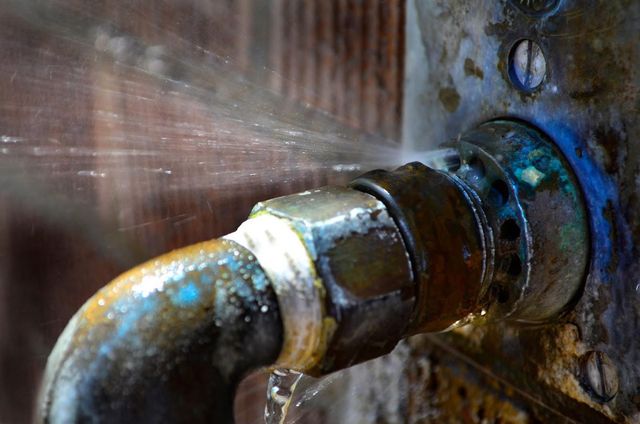Here down the page you will discover a lot of sound content involving Locating water leaks.

Early discovery of dripping water lines can mitigate a prospective calamity. Aside from conserving you cash, it will certainly reduce the stress and also aggravation. The moment you discover a leakage, calling your plumber for repair work is the very best remedy. Some little water leakages might not be noticeable. Here are some hacks that help if you can not detect it with your nude eyes.
1. Check Out the Water Meter
Every residence has a water meter. Inspecting it is a surefire manner in which helps you uncover leaks. For beginners, shut off all the water resources. Make sure no one will certainly flush, utilize the tap, shower, run the washing equipment or dishwashing machine. From there, most likely to the meter and watch if it will transform. Because nobody is utilizing it, there should be no motions. That indicates a fast-moving leak if it moves. If you find no adjustments, wait an hour or 2 as well as check back again. This implies you may have a sluggish leakage that might also be below ground.
2. Check Water Usage
Assess your water costs and also track your water consumption. As the one paying it, you ought to discover if there are any kind of disparities. If you find sudden changes, despite your usage being the same, it indicates that you have leaks in your plumbing system. Keep in mind, your water costs should fall under the very same range monthly. An abrupt spike in your expense suggests a fast-moving leak.
A stable rise every month, even with the very same routines, reveals you have a slow leak that's likewise gradually escalating. Call a plumber to completely check your home, especially if you feel a cozy area on your flooring with piping underneath.
3. Do a Food Coloring Test
When it comes to water usage, 30% comes from bathrooms. If the color in some way infiltrates your bowl throughout that time without flushing, there's a leak in between the storage tank and dish.
4. Asses Outside Lines
Don't forget to check your exterior water lines also. Must water leak out of the connection, you have a loose rubber gasket. One tiny leakage can throw away tons of water and also surge your water bill.
5. Evaluate as well as Analyze the Scenario
Property owners should make it a routine to check under the sink counters as well as also inside cupboards for any kind of bad odor or mold development. These two red flags indicate a leakage so prompt interest is required. Doing routine inspections, even bi-annually, can conserve you from a significant problem.
Examine for discolorations as well as weakening as a lot of pipes as well as devices have a life expectations. If you suspect dripping water lines in your plumbing system, don't wait for it to escalate.
Early detection of leaking water lines can reduce a possible calamity. Some little water leakages may not be visible. Checking it is a surefire way that helps you discover leakages. One small leak can squander lots of water as well as spike your water costs.
If you believe dripping water lines in your plumbing system, don't wait for it to escalate.
WARNING SIGNS OF WATER LEAKAGE BEHIND THE WALL
PERSISTENT MUSTY ODORS
As water slowly drips from a leaky pipe inside the wall, flooring and sheetrock stay damp and develop an odor similar to wet cardboard. It generates a musty smell that can help you find hidden leaks.
MOLD IN UNUSUAL AREAS
Mold usually grows in wet areas like kitchens, baths and laundry rooms. If you spot the stuff on walls or baseboards in other rooms of the house, it’s a good indicator of undetected water leaks.
STAINS THAT GROW
When mold thrives around a leaky pipe, it sometimes takes hold on the inside surface of the affected wall. A growing stain on otherwise clean sheetrock is often your sign of a hidden plumbing problem.
PEELING OR BUBBLING WALLPAPER / PAINT
This clue is easy to miss in rooms that don’t get much use. When you see wallpaper separating along seams or paint bubbling or flaking off the wall, blame sheetrock that stays wet because of an undetected leak.
BUCKLED CEILINGS AND STAINED FLOORS
If ceilings or floors in bathrooms, kitchens or laundry areas develop structural problems, don’t rule out constant damp inside the walls. Wet sheetrock can affect adjacent framing, flooring and ceilings.
https://www.servicemasterbyzaba.com/blog/how-to-detect-water-leakage-in-walls/

I was guided to that article on Detecting hidden plumbing leaks through an associate on a different web page. Sharing is caring. One never knows, you will be helping someone out. I love reading our article about Detecting hidden plumbing leaks.